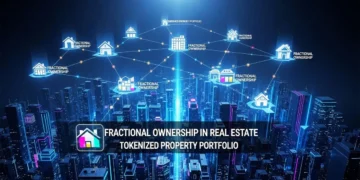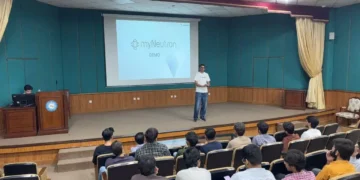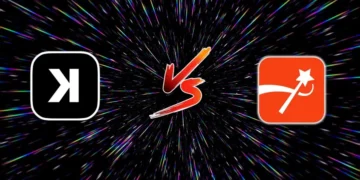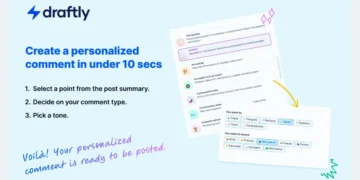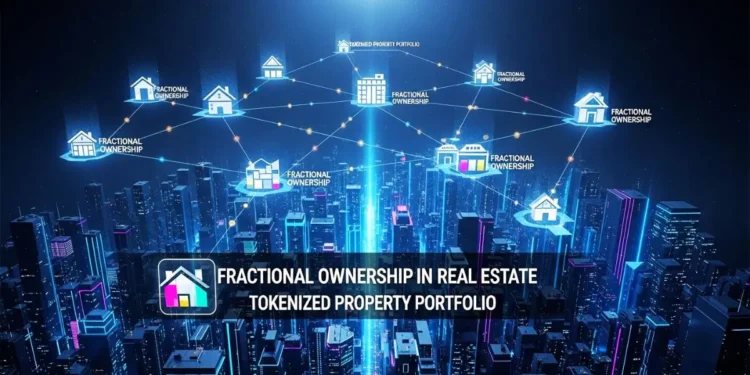In the world of real estate investing, the landscape is shifting. Gone are the days when you needed immense capital to own a piece of a premium property. Today, a revolutionary model is democratizing access to real estate wealth: fractional ownership. But what exactly is it, and how can you determine if it’s the right move for your financial future? This comprehensive guide will walk you through everything you need to know, from finding the best fractional ownership properties to avoiding common fractional ownership pitfalls.
Imagine owning a stake in a luxurious ski-in/ski-out condo in Colorado or a sun-drenched beach house in California without the burden of a seven-figure mortgage. This is the promise of fractional ownership. It allows multiple investors to pool their resources and purchase a property together, each holding a deeded share. This model is not just for vacation homes; it’s also a powerful strategy for fractional ownership commercial real estate investments. Whether you’re looking for fractional ownership properties for sale for personal use or pure investment, this guide will equip you with the knowledge to navigate this exciting market.
What if you could build a diversified property portfolio starting with just $50? How would your investment strategy change if you could buy and sell property shares as easily as trading stocks? These questions are at the heart of the tokenized real estate movement, which combines traditional property investment with blockchain technology to create unprecedented opportunities.
The numbers speak for themselves: the real estate tokenization market is projected to grow from $3.5 billion in 2024 to $19.4 billion by 2033, representing a compound annual growth rate of 21% . Even more striking, some experts believe tokenization could account for 20% of all real estate transactions by 2025 . This isn’t a niche trend—it’s a fundamental shift in how we think about property ownership.
What is Fractional Real Estate Ownership?
At its core, fractional ownership is a shared ownership structure where multiple parties hold legal title to a single property. Think of it like buying a pie: instead of purchasing the whole pie, you buy a few slices. You legally own those slices, and you share the pie’s costs and enjoyment with the other slice-owners.
This is fundamentally different from a timeshare, a point we will explore in detail later. With fractional ownership, your name is on the deed. You have true real estate equity, meaning your share can appreciate in value over time, and you can sell it, will it to your heirs, or use it as collateral. It’s real property ownership, just on a smaller, more accessible scale.
Fractional Ownership in Action: Real-World Examples
To make this concept concrete, let’s look at some fractional ownership examples from actual listings:
A Condo in Aspen, Colorado: For $39,000, you can own a deeded fractional unit in downtown Aspen, which includes three specific weeks of the year for your use .
A Ski Resort Property in Eagle County, Colorado: A fractional real estate investment platform might list a two-bedroom condo with ski-in/ski-out access for $42,000, granting you specific ski and summer weeks, along with perks like lift tickets .
Luxury Urban Living: High-end private residence clubs, like The Phillips Club in New York City, offer fractional ownership properties for sale starting at $170,000, providing access to luxuriously appointed apartments and five-star amenities .
These examples show the diversity of opportunities available, from rustic mountain getaways to metropolitan luxury.
Traditional Fractional Ownership vs. Tokenized Models
The key evolution in this space is the move from traditional fractional ownership structures to tokenized real estate platforms. Here’s how they differ:
Traditional fractional ownership typically involves:
Small groups of investors (often acquaintances)
Complicated legal agreements
Manual processes for distributions and ownership transfers
Limited liquidity and exit options
Higher minimum investments
Tokenized fractional ownership, in contrast, offers:
Digital tokens representing ownership on a blockchain
Smart contracts that automate income distributions
Global accessibility through online platforms
Secondary markets for buying and selling tokens
Lower minimum investments (as little as $10-$100)
This technological evolution has transformed fractional ownership from an arrangement for the privileged few to an accessible investment strategy for the masses. Unsurprisingly, this model particularly resonates with younger investors—60% of fractional investors are under 40 , signaling a generational shift in investment preferences.
How Real Estate Tokenization Works: A Step-by-Step Guide
The Tokenization Process Demystified
Understanding the tokenization process is key to grasping why this model represents such a significant advancement. The journey from physical property to digital tokens follows a carefully structured path:
Property Selection and Acquisition: Platforms identify suitable properties with stable value and reliable income potential. These aren’t speculative developments but income-producing assets with proven track records.
Legal Structuring: A Special Purpose Vehicle (SPV)—typically a Limited Liability Company (LLC)—is established to hold the legal title to the property . This critical step provides legal protection and clarity for investors. Some platforms, like Lofty, use innovative structures such as DAO LLCs, which give token holders actual ownership and voting rights on key property decisions .
Property Valuation: Professional appraisers determine the market value of the property, which establishes the total number of tokens to be issued and their individual price .
Token Creation: The ownership rights are converted into digital tokens on a blockchain. While Ethereum and Solana are common choices, platforms like Lofty use the Algorand blockchain for its fast transaction speeds and low fees . These tokens can take various forms—some platforms use security tokens representing ownership shares, while others utilize NFTs to represent unique fractional interests .
Token Offering: The tokens are made available to investors through an Initial Token Offering (ITO) or Security Token Offering (STO). Investors can purchase these tokens using traditional fiat currency or cryptocurrencies on the platform.
Ongoing Management and Distributions: The property is professionally managed, with rental income automatically distributed to token holders via smart contracts. This automation eliminates manual processes and ensures timely, proportional payments.
Secondary Market Trading: After an initial holding period, investors can buy and sell their tokens on secondary marketplaces, providing liquidity options rarely available in traditional real estate.
The Role of Smart Contracts and Blockchain
The technological magic behind tokenized real estate lies in smart contracts—self-executing contracts with the terms directly written into code. These digital agreements automatically handle critical functions like:
Distributing rental income proportionally to token holders
Recording ownership transfers when tokens are sold
Facilitating voting on key property decisions
Ensuring compliance with regulatory requirements
The blockchain technology underlying these tokens provides an immutable, transparent record of all transactions and ownership history. This creates a level of security and transparency impossible to achieve with traditional paper-based systems .
The Compelling Benefits of Tokenized Real Estate Investing
Unprecedented Accessibility and Lower Barriers
Perhaps the most transformative aspect of fractional ownership in real estate is its ability to democratize property investment. Traditional real estate investing has historically required substantial capital—often tens or hundreds of thousands of dollars for a down payment, plus additional reserves for maintenance, vacancies, and repairs.
Tokenization shatters these barriers, allowing investment with as little as $50 on platforms like Lofty and RealT , or $100 on Arrived . This low entry threshold means that building a meaningful real estate investment portfolio is no longer limited to the wealthy. Are you tired of watching property prices soar while feeling priced out of the market? Fractional ownership might be your solution.
Enhanced Liquidity in an Illiquid Asset Class
Traditional real estate is notoriously illiquid—selling a property can take months and involve significant transaction costs. Tokenized real estate introduces unprecedented liquidity through secondary markets where investors can buy and sell tokens representing property shares.
While the underlying real estate asset remains illiquid, the tokens representing ownership can be traded much more freely. Platforms like Lofty offer secondary marketplaces where users can transact nearly instantly . This represents a fundamental shift—imagine being able to adjust your real estate holdings as easily as rebalancing your stock portfolio.
Diversification Opportunities
Diversification is a cornerstone of sound investing, but achieving true diversification in traditional real estate requires enormous capital. With fractional property investment, you can spread relatively small amounts across multiple properties, locations, and types.
Consider the difference:
Traditional approach: $200,000 might buy one single-family home in a single market
Fractional approach: The same $200,000 could buy shares in 20 different properties across various geographic markets and property types
This diversified approach significantly reduces your exposure to localized market downturns or property-specific issues. The data supports this strategy—over the past decade, diversified fractional real estate has delivered higher annualized returns (11.6%) compared to traditional real estate investments (6.2%) .
Transparency and Efficiency
The blockchain foundation of tokenized real estate creates unparalleled transparency. Every transaction, ownership transfer, and income distribution is recorded on an immutable public ledger. This means you can verify exactly who owns what, track the performance history of any property, and see exactly how income is calculated and distributed.
Additionally, smart contracts automate processes that traditionally required manual intervention—collecting rent, paying expenses, and distributing net income to investors. This automation doesn’t just reduce administrative overhead; it also minimizes human error and ensures proportional, timely distributions to all investors.
Fractional Ownership vs. Timeshare: 8 Critical Differences You Must Know
Many people confuse fractional ownership with timeshares, but the differences are stark and significant. Understanding these distinctions is crucial to making an informed decision. The table below breaks down the key differentiators.
| Feature | Fractional Ownership | Timeshare |
|---|---|---|
| Number of Owners | Limited, typically 6-14 parties | Can be up to 52 owners per unit |
| Scheduling Availability | 5 weeks or more per year | Typically 1-2 weeks per year |
| Equity & Appreciation | You build equity; the property can appreciate | No equity; the value typically depreciates |
| Management Role | Owners have a say in management decisions | Owners have no management role |
| Maintenance Responsibility | Owners share costs, often via a structured fee | Mandatory annual fees that often increase |
| Property Type | Often single-family luxury homes | Typically multifamily resort units |
| Resale Value | Can be sold like real estate; potential for profit | Difficult to resell; almost always at a loss |
| Legal Structure | Deeded real estate ownership | Right-to-use license |
As Steve Dering, founder of Elite Alliance, clarifies, “People often mix up fractional ownership with timeshares where consumers buy a certain amount of time in a vacation home but don’t actually own the property. With fractional ownership, you own real estate that can be sold, placed in a trust, gifted, or inherited.”
The Unbeatable Advantages of Fractional Property Investment
Why are so many savvy investors turning to this model? The benefits are compelling:
Access to Premium Real Estate: You can own a share of a luxury property in a premier location that would be financially out of reach on your own.
Diversification: With a lower entry point, you can spread your investment across multiple properties and markets, reducing risk.
Passive Income Potential: Many fractional real estate investment platforms focus on rental properties, allowing you to earn quarterly or even daily dividends from rental income without being a landlord .
Hassle-Free Management: Professional management companies handle maintenance, cleaning, bills, and tenant issues. You simply enjoy the benefits of ownership .
Build Real Equity: Unlike timeshares, you are investing in an asset that has the potential to grow in value over time, building your personal wealth .
Navigating the Pitfalls: A Guide to Smart Fractional Investing
While the model is attractive, it’s not without its challenges. Being aware of the fractional ownership pitfalls is the first step to avoiding them. Let’s explore the “seven deadly sins” of fractional ownership and how to steer clear .
1. Rushing In Without a Plan (“Petting the Puppy”)
The excitement of looking at beautiful properties can lead to impulsive decisions. Before you even start browsing fractional ownership properties for sale, align with your potential co-owners or carefully review the platform’s rules. Key questions to ask include: What are the rules for renting out your share? How are disputes resolved? What is the process if someone wants to sell?
2. Blind Trust (“Trusting Without Verifying”)
Even if you’re investing with friends or a seemingly reputable company, do your due diligence. Research the financial health of co-owners and the track record of fractional ownership real estate companies. Check reviews and their history of managing properties .
3. Being Unprepared for Surprises (“Failing to Set up a Reserve Fund”)
Properties always have unexpected costs, from a broken appliance to a new roof. A well-structured fractional arrangement will have a funded reserve account to cover these expenses without resorting to special assessments. Plum, for example, insists on funding a 3% reserve at closing .
4. Lack of Communication (“Lacking the Courage to Speak Directly”)
Clear and polite communication is the bedrock of any successful shared ownership. If you have a concern about maintenance or usage, voice it clearly and early to prevent small issues from festering into major conflicts .
5. Scheduling Chaos (“Being Loosey Goosey with the Schedule”)
An informal scheduling system is a recipe for conflict. The best fractional ownership properties use a formal, transparent booking system, often managed through an app, that ensures fair and equitable access for all owners, especially during peak seasons .
6. Ignoring the Exit Strategy (“Buying a House in Perpetuity”)
Life circumstances change. Instead of an open-ended commitment, look for arrangements with a defined term (e.g., 5-10 years) or a clear and straightforward process for selling your share on a secondary market. This provides crucial flexibility .
7. Underestimating Costs
While more affordable than full ownership, fractional shares still come with ongoing costs. Understand all fees, including acquisition fees, annual management fees, and reserve fund contributions, to ensure it fits your budget.
Top Fractional Real Estate Investment Platforms to Consider in 2026
The rise of technology has made accessing these opportunities easier than ever. Here are some of the leading fractional real estate investment platforms :
Arrived: Our top pick for its accessibility. With a minimum investment of just $100, it allows non-accredited investors to buy shares in single-family rental properties and earn passive quarterly dividends .
Fundrise: A well-respected crowdfunding platform perfect for beginners. With a $10 minimum, it offers a range of eREITs and funds focused on different strategies, like appreciation or income .
Groundfloor: A unique platform focusing on real estate debt. For a $10 minimum, you can invest in short-term, high-yield loans to real estate flippers, offering a different risk/return profile .
Lofty.ai: A marketplace that allows you to buy tokens representing ownership in rental properties. A key feature is the ability to earn daily rental income payments, providing immediate cash flow .
1031 Crowdfunding: This platform is for accredited investors looking to defer capital gains taxes through 1031 exchanges into Delaware Statutory Trusts (DSTs). It has a higher minimum ($25,000) and focuses on stabilized commercial assets .
Finding the Best Fractional Ownership Properties for Your Goals
So, how do you find these opportunities? The best fractional ownership properties are those that align with your personal and financial objectives. Ask yourself:
Is this for personal use, investment, or both? Your goal will dictate the type of property and the structure you choose. If it’s for use, prioritize location and amenities. If it’s for investment, focus on rental yield and appreciation potential.
What is your budget? Consider both the initial share price and the predictable annual costs.
What kind of experience do you want? Are you looking for a ski chalet, a beach house, or an urban apartment? Leading fractional ownership real estate companies like Pacaso specialize in curating luxury single-family homes in highly desirable destinations .
Expanding into Commercial Real Estate
The fractional model isn’t limited to vacation homes. Fractional ownership commercial real estate is a growing trend, allowing investors to own a piece of office buildings, retail centers, industrial warehouses, or even RV parks through platforms like Fractional.app . This opens up a whole new asset class that was previously the exclusive domain of large institutions and ultra-wealthy individuals.
The Upside: Why Savvy Investors Are Choosing Fractional Ownership
The growing popularity of this model isn’t just a trend; it’s a strategic response to a changing market. Investors are leveraging it to achieve goals that were previously out of reach.
Unlocking Luxury and High-Value Assets
The most obvious benefit is affordability. It lowers the barrier to entry for owning a piece of a multi-million dollar vacation home in a prime location like Miami or a mountain retreat in Wyoming. This same principle applies to fractional ownership commercial real estate, giving smaller investors access to high-value office buildings or retail centers.
Diversification and Passive Income
Instead of putting all your capital into one property, fractional ownership allows you to spread your investment across several assets in different locations. For commercial properties, this model provides direct access to high and stable yields from long-term tenants, creating a steady, passive income stream.
True Ownership and Capital Growth
Because you own a part of the title, your investment’s value moves with the market. If the property’s value increases, so does the value of your share. This potential for capital appreciation is a key differentiator from timeshares and a major driver of ROI for fractional investors.
Uncovering the Fractional Ownership Pitfalls to Avoid
Of course, no investment is without risk. To make an informed decision, you must be aware of the potential fractional ownership pitfalls. Acknowledging these challenges is the first step in mitigating them.
Smaller Gains and Shared Profits
While sharing costs is great, it also means sharing profits. The rental income or appreciation gains are split among all owners, so your individual return will be smaller than if you owned the property outright.
The Challenge of Less Control
Collective ownership requires collective decision-making. Disagreements over renovations, management styles, or when to sell can lead to conflicts and slow down important decisions, potentially impacting the property’s value. Have you considered your exit strategy before investing?
Watch Out for Extra Fees
Most fractional properties are managed by a third-party company, which is convenient but comes at a cost. These management fees can reduce your overall returns, so they must be factored into your calculations. Furthermore, failing to establish a healthy reserve fund for unexpected repairs can cause major financial stress down the line.
Exploring Different Types: From Vacation Homes to Commercial Hubs
The fractional model is incredibly versatile. While luxury homes are the most well-known application, there are many other fractional ownership examples.
Luxury Vacation Homes
This is the classic use case: a group of friends or investors buying a vacation house in the mountains or on the beach. They share the purchase price and ongoing costs, allowing them to enjoy a high-end property for a fraction of the cost of sole ownership.
Fractional Ownership Commercial Real Estate
This is a rapidly growing sector. Investors can buy shares in office buildings, retail shopping complexes, or industrial warehouses. The primary goal is often to collect shared rental income from business tenants and benefit from long-term appreciation. This model opens up the lucrative commercial market to a much wider pool of investors.
Beyond Buildings: Other Fractional Assets
The concept extends far beyond real estate. Companies like Flexjet apply it to private jets, and others offer fractional ownership of supercar collections. This demonstrates the power of the model to make any high-value asset more accessible.
How to Find the Best Fractional Ownership Properties
Finding the right opportunity is key to a successful investment. When searching for the best fractional ownership properties, you need to combine market research with diligent vetting.
Researching Locations and Market Trends
Focus on properties in sought-after destinations with strong potential for appreciation. Look for markets with high rental demand and a history of stable growth.
Vetting Fractional Ownership Real Estate Companies
The reputation of the company managing the fractional ownership scheme is paramount. Look for established fractional ownership real estate companies with a transparent track record. Brands like Pacaso and Fraxioned specialize in this space, and their platforms can be a good starting point for your research. Do your due diligence and read reviews from other owners.
Finding Fractional Ownership Properties for Sale
You can find fractional ownership properties for sale through specialized online marketplaces, the websites of fractional ownership companies, or by working with real estate agents who specialize in this niche.
The Rise of the Fractional Real Estate Investment Platform
Technology has revolutionized fractional investing. The emergence of the fractional real estate investment platform has made it easier than ever to get started. These platforms handle much of the heavy lifting, from vetting properties and structuring legal agreements to managing the asset and distributing income.
Leading Platforms for Fractional Real Estate Investment
The growing popularity of fractional ownership has spawned numerous platforms, each with slightly different approaches and specialties. Here’s a comparison of some leading options:
| Platform | Minimum Investment | Key Features | Best For |
|---|---|---|---|
| Lofty | $50 | Daily rental distributions, secondary marketplace, voting rights | Hands-on investors who want active involvement |
| Arrived | $100 | Focus on single-family rentals and vacation properties, quarterly dividends | Passive investors seeking simplicity |
| Fundrise | $10 | Diverse portfolio options including eREITs and development projects | Beginners and those wanting maximum diversification |
| RealT | $50 | Tokenized U.S. rental properties, global investor base | International investors and crypto natives |
| Groundfloor | $10 | Real estate debt investments, short-term notes | Investors seeking higher yields through debt positions |
| Binaryx | $50 | Global properties including Bali and Montenegro, construction projects | Geographic diversification outside the U.S. |
Table: Comparison of leading fractional real estate platforms showing varying minimum investments and specialties.
When evaluating platforms, consider factors beyond minimum investment amounts:
Fee structures: Understand all management, transaction, and performance fees
Track record: Look for platforms with proven histories of successful offerings
Liquidity options: Determine whether secondary markets exist and how active they are
Regulatory compliance: Ensure the platform properly registers offerings or qualifies for exemptions
Navigating the Risks and Challenges
Regulatory Considerations
The regulatory landscape for tokenized real estate is still evolving, creating some uncertainty for investors. In the United States, the SEC generally classifies most tokenized real estate offerings as securities, meaning they must either register with the SEC or qualify for exemptions like Regulation D, Regulation A+, or Regulation Crowdfunding .
Platforms address these requirements by implementing robust KYC (Know Your Customer) and AML (Anti-Money Laundering) protocols . These verification processes, while sometimes cumbersome, are essential for maintaining regulatory compliance and preventing illicit activities—especially important given that an estimated $1.6 trillion was tied to real estate money laundering in 2021 .
Technological and Security Risks
While blockchain technology offers enhanced security through its decentralized and immutable nature, it’s not without risks. In 2023, hackers stole approximately $1.7 billion from cryptocurrency platforms , highlighting the importance of robust security measures.
Additionally, smart contract vulnerabilities can create risks. Code flaws or undiscovered bugs could potentially lead to financial losses. Reputable platforms mitigate these risks through:
Regular smart contract audits by third-party security firms
Insurance coverage for digital assets
Multi-signature wallets for added security
Bug bounty programs to identify vulnerabilities
Market and Liquidity Risks
While tokenization improves liquidity compared to traditional real estate, it doesn’t eliminate all liquidity constraints. The underlying asset remains physical real estate, which is inherently illiquid. During market downturns or for properties in less desirable locations, finding buyers for tokens can still be challenging .
It’s also important to understand that while secondary markets provide liquidity options, they don’t guarantee that you can sell your tokens at your desired price. Token prices can fluctuate based on property performance, market conditions, and investor sentiment.
The Future of Fractional Real Estate Ownership
Technological Evolution and Mainstream Adoption
The future of fractional ownership looks increasingly integrated with emerging technologies. We’re likely to see greater adoption of AI and data analytics to identify investment opportunities and optimize property management . The boundaries between traditional finance and blockchain-based investing will continue to blur as established financial institutions enter the space.
Institutional participation is already growing rapidly—transaction volumes from institutional investors rose 43% in Q1 2025 alone . This institutional validation brings additional credibility and capital to the space while potentially increasing competition for the best deals.
Regulatory Clarity and Standardization
As the market matures, we can expect greater regulatory clarity and the development of industry standards. Initiatives like Wyoming’s DAO LLC Act provide frameworks that other jurisdictions will likely emulate. This regulatory evolution will reduce uncertainty while maintaining important investor protections.
Expansion into New Property Types and Markets
While residential properties currently dominate the fractional investment landscape, we’re seeing rapid expansion into niche sectors including:
Data centers and digital infrastructure
Healthcare facilities and senior housing
Logistics warehouses supporting e-commerce
Sustainable properties with green certifications
Geographic diversification is also accelerating, with platforms offering properties in emerging markets alongside traditional U.S. and European opportunities. This global reach allows investors to build truly diversified international property portfolios—something previously possible only for the largest institutions.
Getting Started with Fractional Real Estate Investing
Assessing Your Investment Goals and Risk Tolerance
Before diving into fractional real estate investment, take time to clarify your objectives. Are you seeking:
Regular passive income from rental yields?
Long-term capital appreciation?
Portfolio diversification beyond stocks and bonds?
Specific exposure to particular markets or property types?
Your answers will help determine which platforms and property types align best with your goals. Also, consider your liquidity needs and investment timeframe—while secondary markets provide exit options, fractional real estate generally works best as a medium to long-term investment.
Due Diligence Best Practices
Once you’ve identified potential platforms and offerings, thorough due diligence is essential:
Research the platform: Review its track record, fee structure, security measures, and regulatory compliance.
Analyze the property: Examine location-specific factors, property condition, rental history, and valuation methodology.
Understand the legal structure: Confirm that proper SPVs are used and that your ownership rights are clearly defined and protected.
Review offering documents: Carefully read all disclosures about risks, fees, and projected returns.
Start small: Consider making an initial small investment to familiarize yourself with the platform’s operations before committing larger amounts.
Building a Diversified Tokenized Portfolio
As with any investment strategy, diversification is key to managing risk in fractional real estate. Rather than concentrating your investment in a single property, consider spreading your capital across:
Multiple properties in different geographic markets
Various property types (single-family, multifamily, commercial)
Different platforms (to mitigate platform-specific risk)
Both debt and equity positions where available
This diversified approach can help smooth returns and reduce your exposure to any single property or market downturn.
Conclusion
Fractional ownership represents a seismic shift in real estate, making it more accessible, manageable, and diversified. It intelligently solves the classic problems of high cost, maintenance hassles, and lack of flexibility associated with second homes.
By understanding the key differences from timeshares, carefully evaluating your goals, choosing a reputable platform, and being mindful of common pitfalls, you can confidently explore this innovative path to building wealth. The dream of owning a piece of a premium property is no longer a fantasy—it’s an achievable reality.
Have you found a fractional property that captures your imagination? What location or type of property is at the top of your list? Share your thoughts in the comments below!
Frequently Asked Questions (FAQs)
What is the legal structure of fractional ownership?
Fractional ownership is typically structured as a deeded real estate interest. This means your name is on the title, and you have the same legal rights as any property owner, including the ability to sell, rent, or bequeath your share .
What are the pros of fractional ownership?
The main advantages include access to higher-value properties, shared costs and responsibilities, potential for property appreciation and rental income, and a hassle-free ownership experience managed by professionals .
How does fractional ownership work with mortgages?
This can vary. Some fractional purchases may be cash-only, while others might be structured with a shared group mortgage. Some platforms allow you to invest with just your capital without needing to secure individual financing . It’s essential to clarify the financial structure before investing.
Can I rent out my fractional ownership share?
In most cases, yes. The specific rules will be outlined in the ownership agreement. Many platforms have built-in rental programs that allow you to place your share in a rental pool to generate passive income during times you’re not using the property .
Is fractional ownership a good investment?
It can be, as it offers potential for both capital appreciation and rental income. However, like any investment, it carries risk, including real estate market fluctuations and liquidity constraints. It’s important to conduct thorough due diligence and consider it a medium to long-term investment
What is the main difference between fractional ownership and a timeshare?
The main difference is that fractional ownership grants you partial ownership of the property’s title, making it a real estate asset that can appreciate in value. A timeshare only gives you the right to use the property for a specific time each year and is a depreciating asset.
Can you get a mortgage for fractional ownership?
Yes, financing is often available for fractional ownership properties. Buyers can traditionally finance their shares just as they would with a whole property, though it may require working with lenders who specialize in this type of co-ownership.
Is fractional ownership a good investment?
It can be an excellent investment if you perform due diligence. It offers a low-cost entry into appreciating real estate assets and potential rental income. However, you must research the property, location, and management company carefully and be aware of the pitfalls, such as shared control and management fees.
How are maintenance costs handled in fractional ownership?
Maintenance costs are shared among all co-owners, typically proportional to their ownership percentage. These fees are usually managed by a professional property management company, which handles upkeep, repairs, and cleaning.
What happens if I want to sell my share?
As a deeded owner, you can sell your share at any time. You can list it on the open market just like any other piece of real estate. The value of your share will have either appreciated or depreciated based on the current market value of the property.






